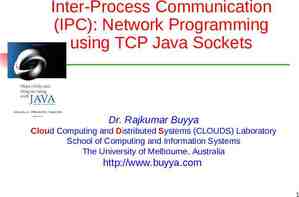Inventors and inventions in microbiology
17 Slides689.96 KB

Inventors and inventions in microbiology

MICROSCOPE In 1874 Anton Van Leeuwenhoek built first microscope. He is commonly known as "the Father of Microbiology", and considered to be the first microbiologist. He is best known for his work on the improvement of the microscope and for his contributions towards the establishment of microbiology.

SMALL POX VACCINE Edward Jenner, was an English physician and scientist who was the pioneer of smallpox vaccine, the world's first vaccine(1796). He is often called "the father of immunology", and his work is said to have "saved more lives than the work of any other human". He was also the first person to describe the brood parasitism of the cuckoo.

GERM TEHORY OF DISEASE The germ theory of disease states that some diseases are caused by microorganisms. This theory was invented in 1862 by Louis Pasteur. Pasteur further demonstrated between 1860 and 1864 that fermentation and the growth of microorganisms in nutrient broths did not proceed by spontaneous generation.

METHODS FOR ANTISEPTIC SURGERY Joseph Lister, 1st Baron Lister (5 April 1827 – 10 February 1912), known as Sir Joseph Lister,between 1883 and 1897, was a British surgeon and a pioneer of antiseptic surgery. By applying Louis Pasteur's advances in microbiology, he promoted the idea of sterile portable ports while working at the Glasgow Royal Infirmary. Lister successfully introduced carbolic acid (now known as phenol) to sterilise surgical instruments and to clean wounds, which led to a reduction in post-operative infections and made surgery safer for patients.

ACID FAST STAIN Paul Ehrlich (14 March 1854 – 20 August 1915) was a German physician and scientist who worked in the fields ofhematology, immunology, and antimicrobial chemotherapy. He invented the precursor technique to Gram staining bacteria. The methods he developed for staining tissue made it possible to distinguish between different type of blood cells, which led to the capability to diagnose numerous blood diseases. In 1908, he received the Nobel Prize in Physiology or Medicine for his contributions to immunology.

GRAM STAIN Hans Christian Joachim Gram (September 13, 1853 – November 14, 1938) was a Danish bacteriologist noted for his development of the Gram stain. Gram staining, also called Gram's method, is a method of differentiating bacterial species into two large groups (grampositive and gram-negative).

RABIES VACCINATION Pasteur was the first scientist to artificially attenuate viruses for use in vaccines. He created several veterinary vaccines before his development of the rabies vaccine in 1885 for use in humans.

PETRI DISH Julius Richard Petri (May 31, 1852 – December 20, 1921) was a German microbiologist who is generally credited with inventing the Petri dish while working as assistant to pioneering bacteriologist Robert Koch.(1887)

PENICILLIN The discovery of penicillin is attributed to Scottish scientist and Nobel laureate Alexander Fleming in 1928. Andrew Jackson Moyer was an American microbiologist who is known mainly for his work on the development of industrial production methods for various microorganisms. May 11, 1945: Method for the

DISPOSABLE SYRINGE AND NEEDLE Becton, Dickinson and Company (BD) is an American medical technology company that manufactures and sells medical devices, instrument systems and reagents. In 1961, the company introduced its disposable BD Plastipak syringe.

PRONGED VACCINATION NEEDLE Benjamin Rubin (born September 27, 1917 in New York, New York - died March 8, 2010 ) was an American microbiologist, known as the inventor of the bifurcated vaccination needle,which played an important role in the eradication of smallpox(1967).

METHOD TO SEQUENCE DNA Maxam–Gilbert sequencing is a method of DNA sequencing developed by Allan Maxam and Walter Gilbert in 1976–1977. This method is based on nucleobase-specific partial chemical modification of DNA and subsequent cleavage of the DNA backbone at sites adjacent to the modified nucleotides. Maxam–Gilbert sequencing was the first widely adopted method for DNA sequencing, and, along with the Sanger dideoxy method, represents the first generation of DNA sequencing methods. Maxam–Gilbert sequencing is no longer in widespread use, having been supplanted by next-generation sequencing methods. Allan Maxam

POLYMERASE CHAIN REACTION Kary Banks Mullis (born December 28, 1944) is a Nobel Prize-winning American biochemist, author, and lecturer. In recognition of his improvement of the polymerase chain reaction (PCR) technique, he shared the 1993 Nobel Prize in Chemistry with Michael Smith and The improvements made by earned the Japan Prize in the Mullis year. allowed PCR to become a same central technique in biochemistry and molecular biology, described by The New York Times as "highly original and significant, virtually dividing biology into the two epochs of

FLAVR SAVR TOMATOES Flavr Savr (also known as CGN-89564-2; pronounced "flavor saver"), a genetically modified tomato, was the first commercially grown genetically engineered food to be granted a license for human consumption. It was produced by the Californian company Calge ne, and submitted to the U.S. Food and Drug Administration (FDA) in 1992. On May 18, 1994, the The plant physiologist Athanasios FDA completed its evaluation Theologis, with tomatoes genetically of the Flavr Savr tomato . modified to contain the ACC synthase

MICROBAL GENOMIC SEQUENCE In 1995 the first microbial genomic sequence was published by Craig Venter, Hamilton Smith, Claire Fraser and colleagues at TIGR Craig Venter Claire M. Fraser Hamilton Smith

THANKS FOR ATTENTION PREPARED BY ALEXANDER ANTOFIY KIEV 2015






